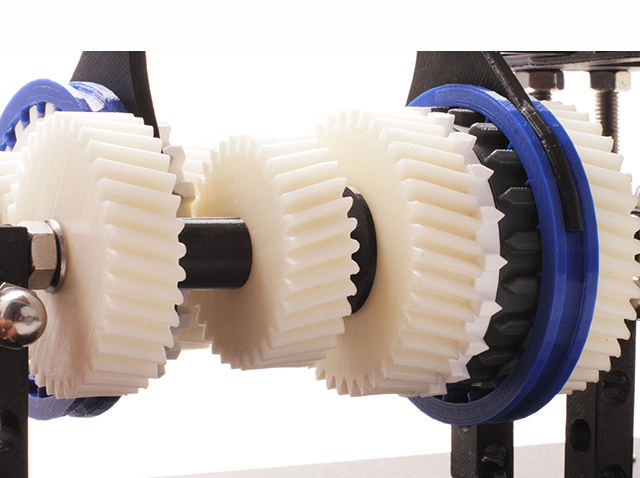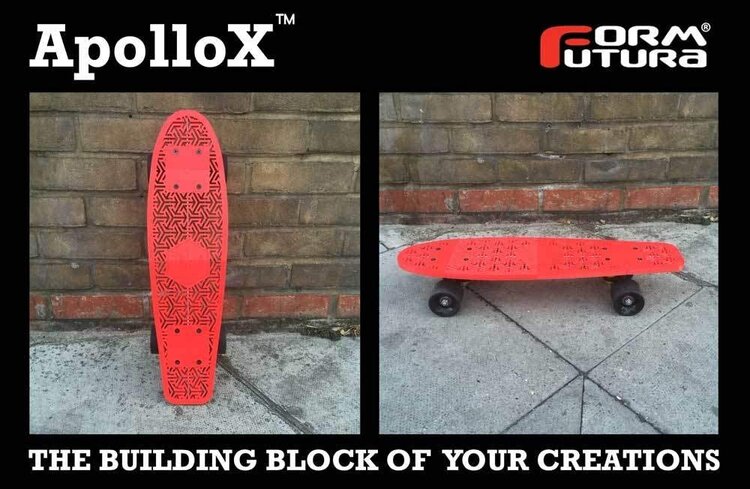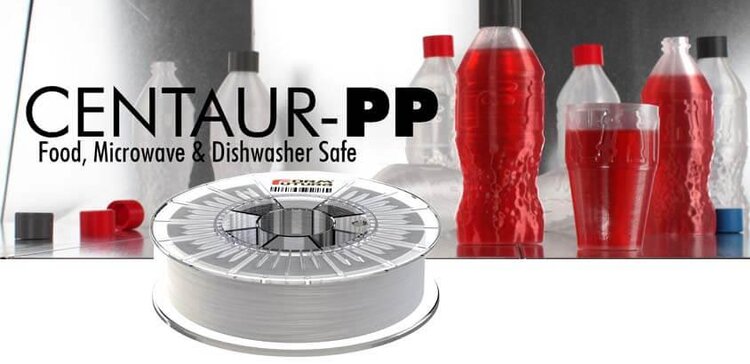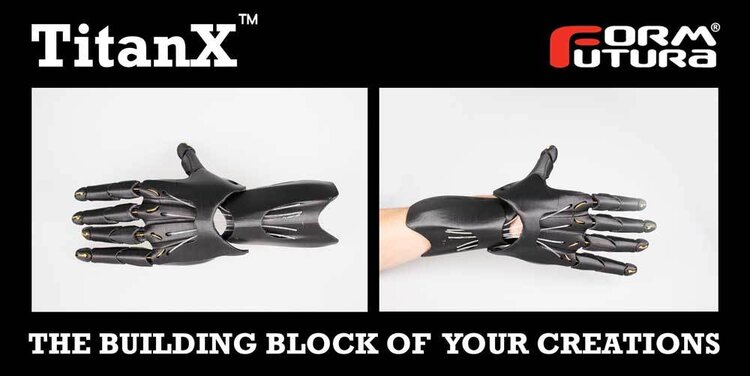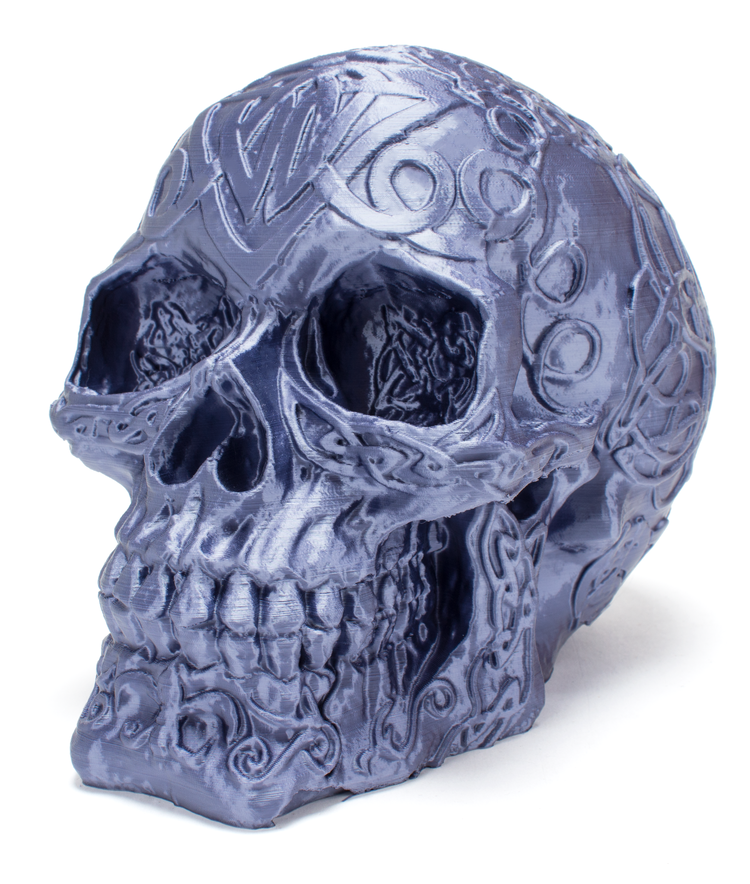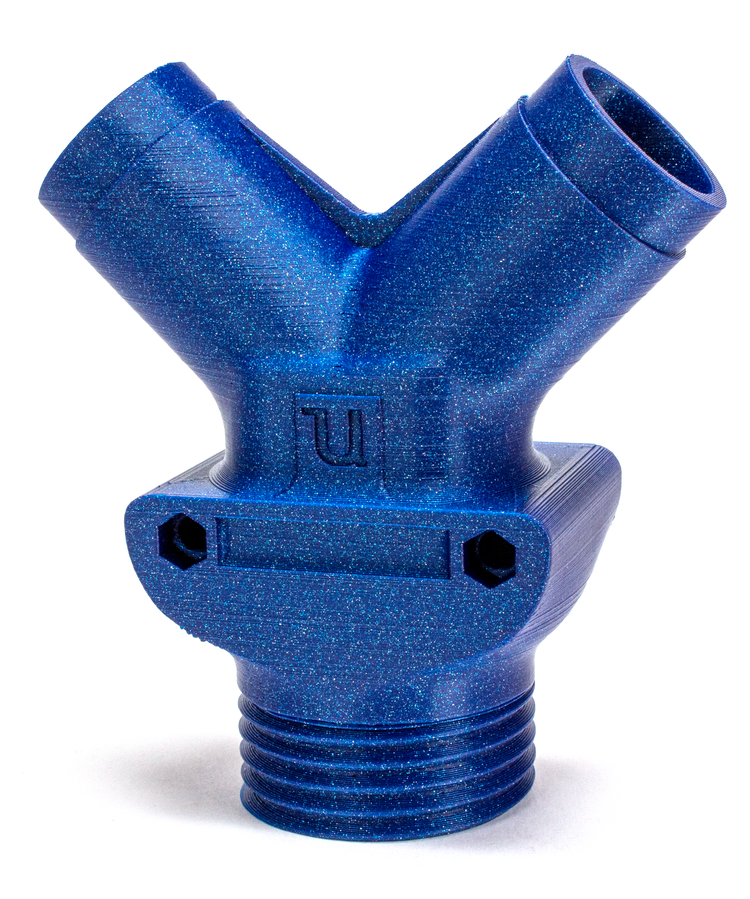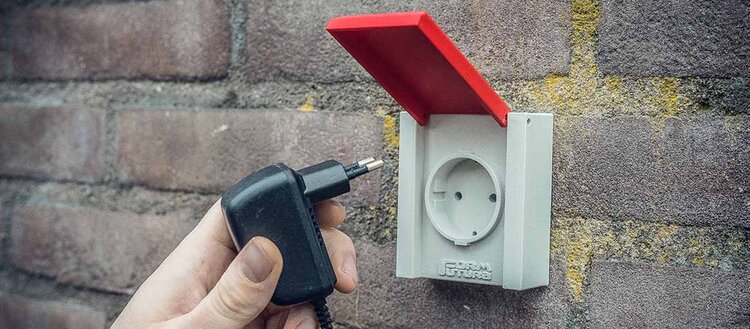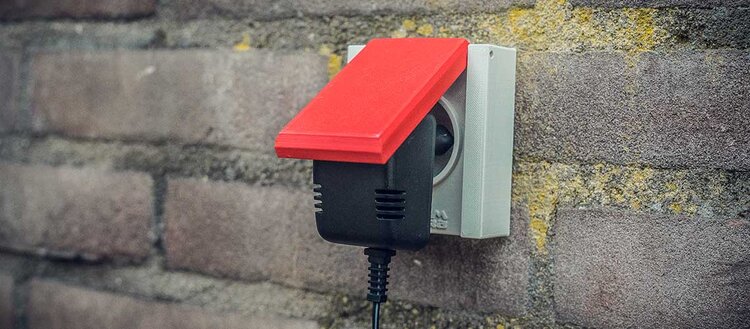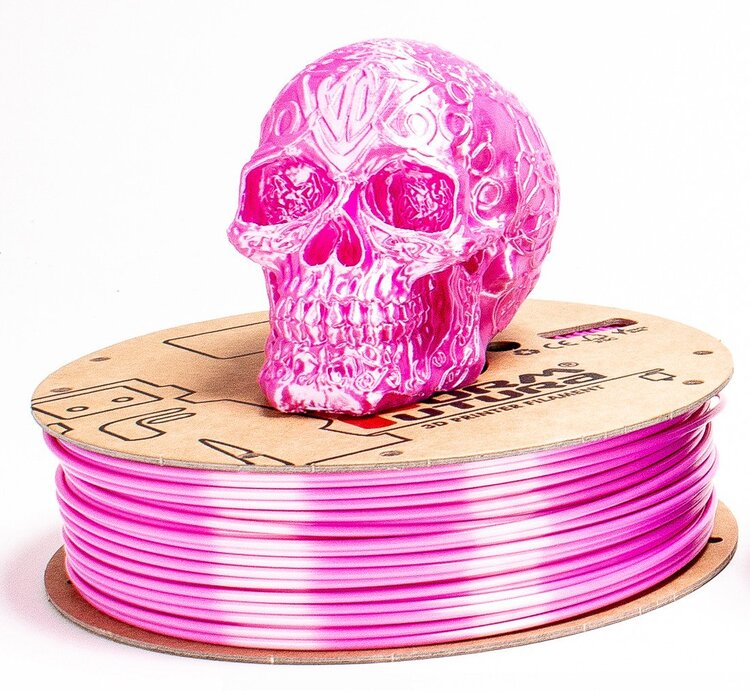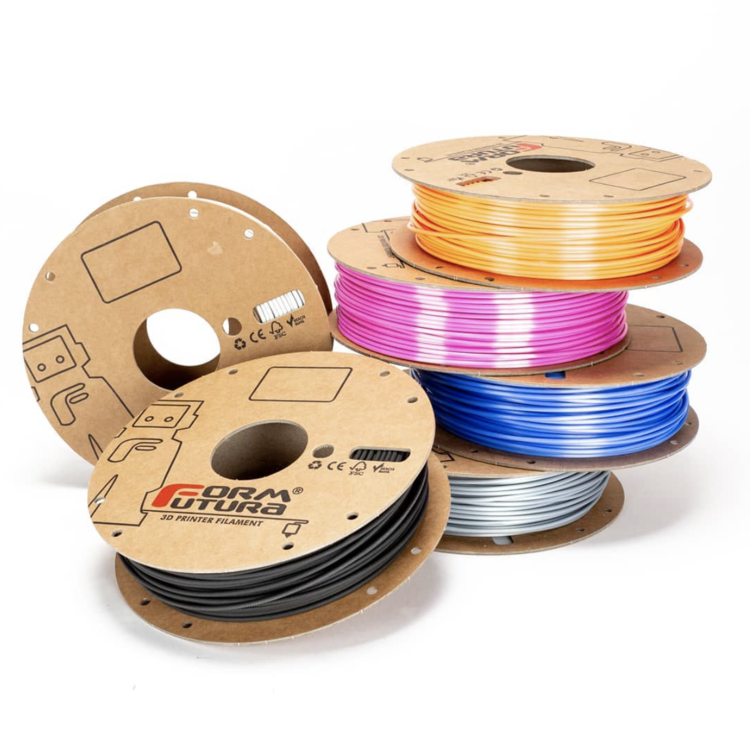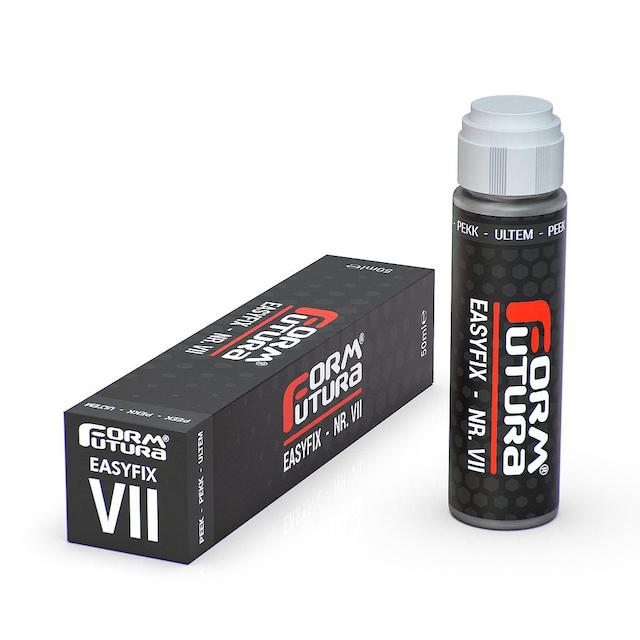
Premium Quality 3D Filaments from one of Europe’s Top Manufacturers, now shipping same day in the USA

3D Printlife is thrilled to offer Formfutura’s cutting-edge 3D printing filaments to our customers. Founded in 2012, Formfutura has developed one of the most expansive, if not the most expansive, material catalogs in the industry. They are also firmly committed to improving sustainability in 3D Printing.
3D Printlife’s initial launch of Formfutura filaments has expanded to include their newest line of high performance materials including PEEK and ULTEM. We aslo offer a select group of their unique materials featuring: ApolloX, Centaur PP, TitanX, Galaxy PLA, Silk Gloss PLA, and now HDglass. All of these materials have been specially optimized for 3d printing, and 3D Printlife has a wide assormtent of colors in stock in both diameters. All orders placed before 4 pm Eastern will ship same-day from our US distribution center.
SHOP FORMFUTURA MATERIALS HERE 
To learn more visit: www.formfutura.com
Formfutura History
FormFutura was founded in 2012, supplying PLA and ABS to the western European market.
Founded in Amsterdam, The Netherlands, FormFutura quickly grew into an unmistakable brand with resellers and customers across Europe and quickly started gaining an international presence. While FDM 3D printers were becoming accessible the brand has established a foothold in the industry, increasing international demand.
The company continues to grow, supplying to 400+ resellers and customers in 75+ countries in 2019.
What we do
FormFutura is one of the leading suppliers of additive manufacturing materials in the world.
Our expertise and product standards create new opportunities for our customers, and we are constantly updating our offering range with premium products and innovating to the optimal choice and knowledge.
We make a pro-active effort to promote sustainable packaging in the AM industry. We supply environmentally friendly recycled products and we support green initiatives.
Products
By offering a complete range of filaments, resins, and adhesives, we now have
a one-stop shop that enables customers to get all their materials in one place. We regularly update our product range with the latest innovative products, putting us in the unique position of staying ahead of the curve in a rapidly expanding industry.
In addition to our standard products, we offer custom-made products. Upon request, we create customized colors and spool sizes for existing materials.
Customer service
With our friendly support staff — consisting of knowledgeable and season 3D printing technicians — we provide customers with reliable customer support. Our support also covers customers of resellers and partners. Through the website everyone can get access to extensive in-depth information about our materials.
Vision and strategy
Our vision is to be a globally trusted business, reliably delivering consistent and quality products and services to the AM industry.
We strongly believe in our responsibility to our customers, our environment, and the industry.
For customer, we are committed to offering innovative, sustainable, and cost-efficient products and services.
We are a front-runner in sustainable packaging of filaments and we continuously make efforts to reduce our carbon footprint.
Our commitment to the industry is to empower it to shape a better tomorrow, and to be an innovative industry-leading supplier.
All these values together define who we are and drive our success. Together we can work on a better tomorrow.
Open-source mentality
We firmly believe the AM industry stands to benefit immensely from sharing knowledge and technologies openly. The more people can — and know how to — use additive manufacturing, the faster it will be adopted and utilized on a global scale. We actively encourage sharing knowledge about all things 3D printing and strive to empower any field of application by making our products accessible across the globe.
Sustainability
In today’s world people have become, and still are becoming, more aware of the fact that we need to find a balance between our social- and economic welfare and the environmental impact of our welfare. Population- and economic growth have put pressure on the environment by overconsumption of natural resources. There needs to be a productive balance between our consumption of natural resources and economic/population growth. Sustainability is the way to find this balance. The principle of sustainability is that all elements that we need for our existence and welfare are (in)directly determined by our natural environment. Therefore we need to be in harmony with our environment in order to warrant the well-being of present and future generations.
3D Printing & Sustainability
At Formfutura we truly believe that desktop 3D printing can have a major contribution in creating a more sustainable society. Please see below some eye-openers with respect to the possibilities desktop 3D printing brings when it comes to sustainability.
Less waste
By making use of Fused Filament Fabrication (FFF), desktop 3D printers extrude the filament layer-by-layer onto the printer bed and the filament is fused together to build an object. So, by making use of FFF technology desktop 3D printers built objects from nothing and by adding successive layers upon each other, meaning there is no waste of filament when creating an object, as opposed to more traditional mass fabrication methods where objects are carved or stamped out a larger piece of material.
Less emission of carbon dioxide (CO2)
Desktop 3D printers take their input from digital computer aided design (CAD) files, which can be transferred electronically to any location in world. This makes it possible for objects to be printed out exactly where they are needed. This could potentially lower the emission of carbon dioxide significantly as products do not need to be shipped all over the world from the factory where they are produced to respectively distributers, wholesalers, local stores and eventually to the end-user.
One machine for all your creations
A desktop 3D printer can make almost anything within the dimensions of the printer. So, only one machine is needed for making many different creations instead of creating specialized machinery for each object you want to make.
Repairing & Upcycling
Desktop 3D printing makes it possible for one to repair one’s utensils by printing a small part of the utensil that is not readily available from the manufacturer. This will increase the lifetime of a utensil which could have otherwise been thrown away. Think about parts of utensils as: the battery cover of your remote control, your cellphone cover, a button of your dishwasher, the handle of your washing machine, the hinge of your wardrobe, the cover of your electric housing, the ash-tray of your car, the lost sealing cap of your air mattress, etc…
Another sustainable opportunity which arises with desktop 3D printing is upcycling. Think about printing items which can add new functionalities to existing objects and by that extending the lifetime of those objects (especially for objects that you were about to throw away).
3D Printing Filaments &
Sustainability
Regardless of the filaments used, desktop 3D printing and its FFF technology can contribute to a more sustainable future. However, your choice of filament can also contribute to a more sustainable environment in the future. The two most common used thermoplastics for desktop 3D printing nowadays are ABS and PLA.
ABS (or Acrylonitrile Butadiene Styrene in full) is a thermoplastic which, as its name implies, is produced by the polymerization of acrylonitrile, butadiene, and styrene. ABS is produced from fossil fuels, meaning that it is not biodegradable and has a greater environmental impact than PLA for instance.
PLA (or Poly-Lactic Acid in full) on the other hand is a thermoplastic which is extruded from the starch of plants, such as corn, cassava, sugarcane, cereals, or sugar beet. By being derived from biological resources this type of thermoplastic can be biodegradable under the right conditions (such as an active compost heap, with enough presence of oxygen) and therefore has a much lesser environmental impact than thermoplastics derived from fossil fuels.
Both thermoplastics have their own specifics with respect to impact strength, density and melting temperatures, meaning that it is up to the user to decide which thermoplastic suits its design best. However, please always keep in mind that PLA has a lesser environmental impact and therefore, that whenever the situation occurs that both thermoplastic’s specifics are suitable for your design, PLA is always the most sustainable option.
HIGH-PERFORMANCE POLYMERS
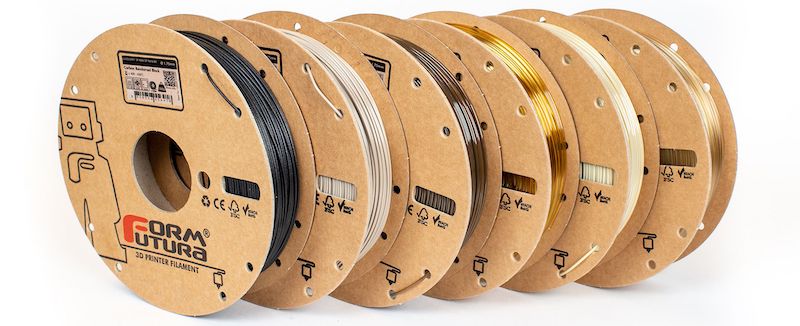
Desktop 3D printers are generally not used for critical applications and parts, high-temperature machines are. The tolerances, dimensional accuracy and properties of the parts are critical to meet the sector standards. 3D printing with high-temperature printers allow the usage of high-performance materials, which opens the door to 3D print end-use parts for aerospace, automotive and medical applications. 3D printing filaments such as PEEK, PEKK, PPSU and PEI (Ultem) parts are replacing steel and other metal parts in the heavy industry.
The high-perfomance 3D printer filaments are on the forefront of using 3D printed parts in aerospace and other applications. These filaments are being used to save weight and production costs of custom parts. High-Temperature 3D Printers are not hype anymore, but actual production machines.
The usage of high-temperature 3D printers allow flexibility in faraway projects. They offer the possibility to have on-the-spot production of (unforeseen) necessary functional parts. 3D printers are accompanying people on boats, space shuttles, satellites and other secluded locations. Instead of carrying a wide range of different spare parts it is possible to include rolls of 3D printing filaments and print only the necessary goods whenever needed. This offers a huge advantage on the logistic part of your projects.
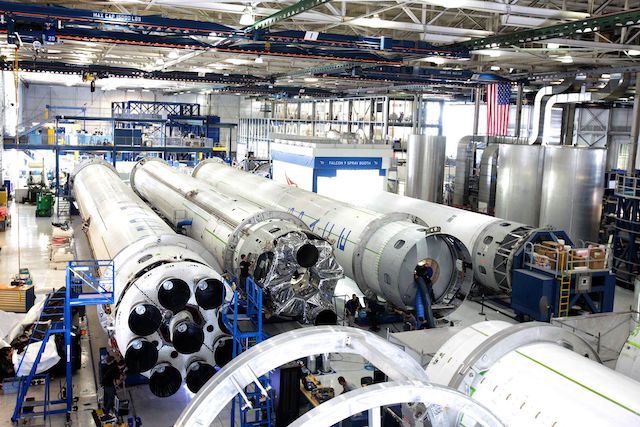
MATCH WITH THE EASYFIX ADHESIVE
Whenever working with materials such as PEEK, PEKK, PEI and PPSU it is best to eliminate all hazards that possibly excist. These filaments are more expensive than general 3D printing filaments and therefore it is even more important to avoid any failed prints.
With our EasyFix Nr. VII you'll eliminate all problems when it comes to warping and adhesion. EasyFix - Nr.VII is a build plate adhesive for 3D printing which is specifically engineered to work with high-performance polymers, such as PEEK, PEKK, PPSU and ULTEM filaments.
EasyFix adhesives are engineered to glue firmly to a heated build plate, making an object stick firmly to the build plate. On the other hand, it also has excellent release properties when the build plate is cold. This makes it very easy to remove a printed object from the build plate while reducing the risk of damaging the build plate and printed object in the process.


